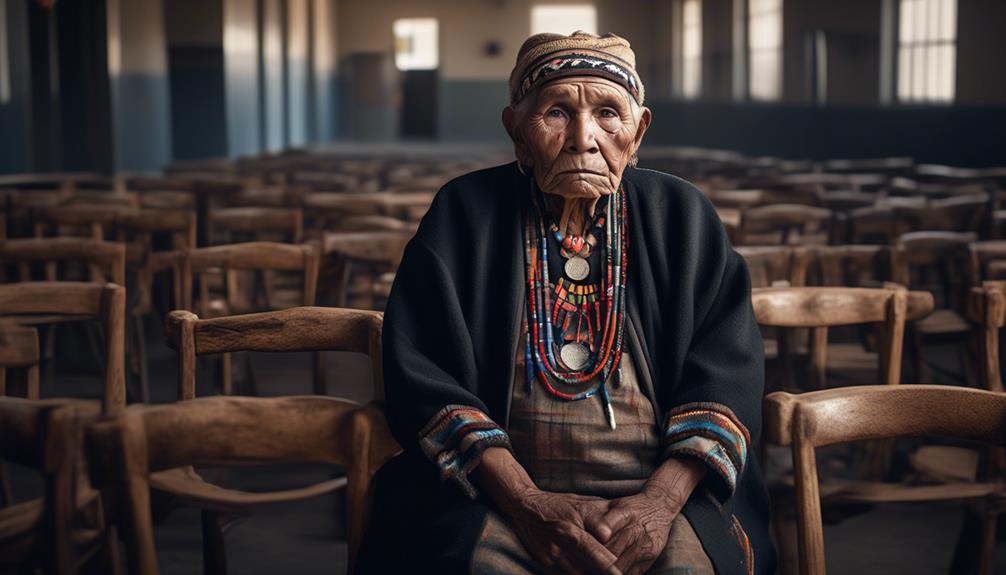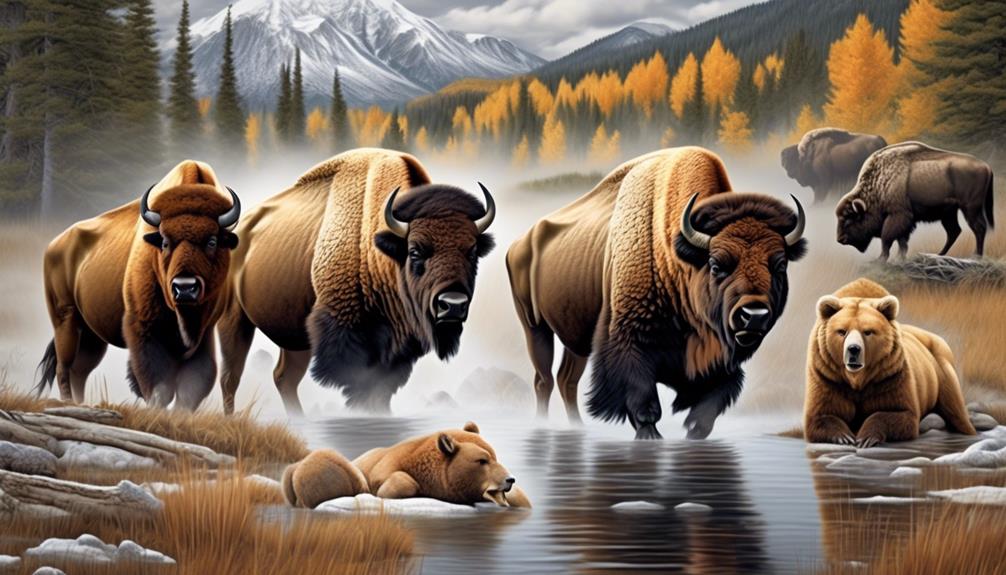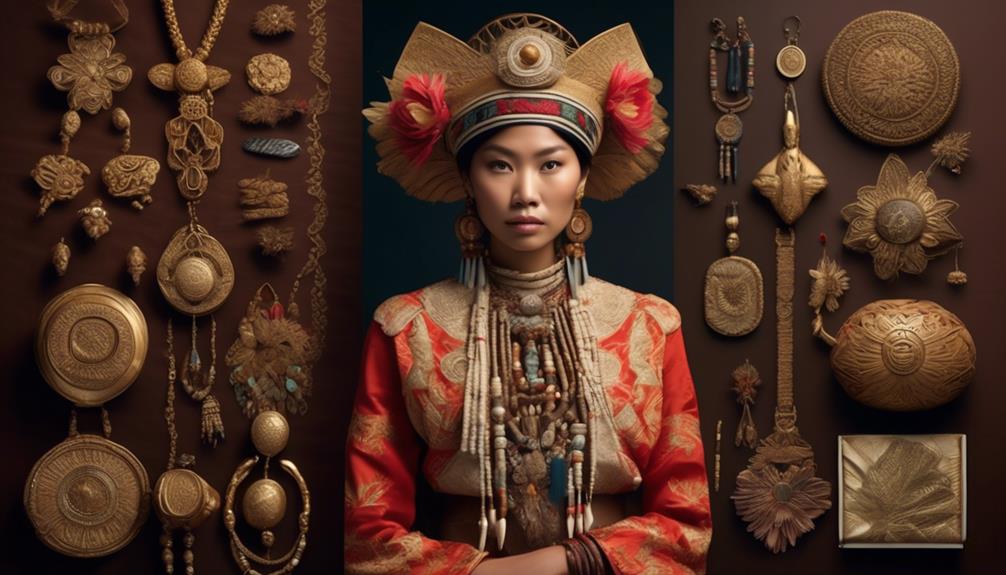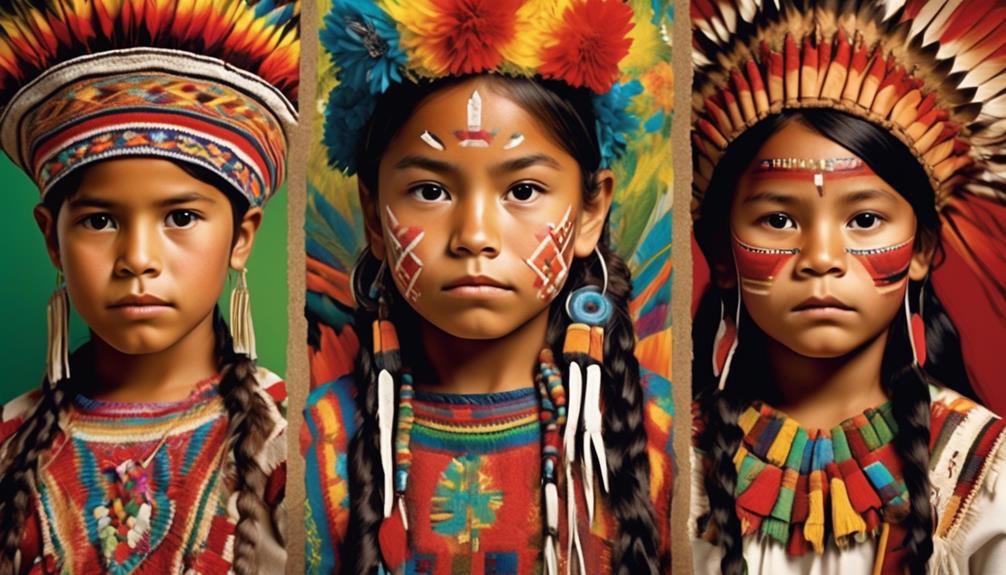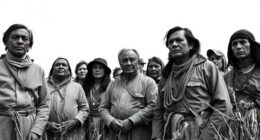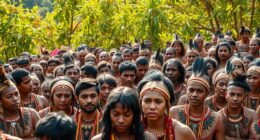When people think of Mexico, they often imagine vibrant celebrations, ancient ruins, and flavorful cuisine. But beyond this colorful image, there lies a rich and intricate tapestry of indigenous cultures that have greatly shaped the identity of the Americas.
These communities, with their diverse languages, traditions, and beliefs, have woven themselves into the very fabric of Mexico, leaving an indelible mark on its history and contemporary society. But what exactly does it mean to be indigenous in the context of the Americas, particularly in Mexico?
The answer is a complex and multifaceted tapestry that continues to evolve and influence the country in myriad ways.
Key Takeaways
- The arrival of the Spanish in the 16th century led to cultural assimilation and fusion of indigenous traditions with European customs.
- Indigenous communities in Mexico have a rich array of cultural traditions, including art, music, dance, and oral storytelling.
- There is linguistic diversity in Mexico, with over 68 indigenous languages, highlighting the importance of preserving languages for cultural heritage.
- Indigenous communities in Mexico have made significant contributions to the country's identity through their traditional knowledge, craftsmanship, and cultural practices.
Historical Roots of Indigenous Americas Mexico
Tracing the historical roots of Indigenous Americas Mexico reveals a complex tapestry of cultural, societal, and political developments that have shaped the region over centuries.
Colonial influences have played a significant role in shaping the identity of Indigenous Americas Mexico. The arrival of the Spanish in the 16th century brought about a period of cultural assimilation, as indigenous traditions and beliefs intersected with European customs and Christianity. This encounter resulted in a complex fusion of cultures, languages, and traditions, creating a unique and diverse cultural landscape that continues to define the region today.
The colonial period also saw the imposition of new political and social structures, which deeply impacted the indigenous communities. The encomienda system, for example, led to the exploitation and forced labor of indigenous peoples, causing significant changes in their traditional ways of life. Moreover, the introduction of new diseases, such as smallpox, had devastating effects on the indigenous population, leading to demographic shifts and social upheaval.
Understanding the historical roots of Indigenous Americas Mexico requires a nuanced examination of the colonial influences and cultural assimilation that have profoundly shaped the region's identity and heritage.
Diversity of Indigenous Cultures in Mexico

The complex fusion of cultures and traditions resulting from colonial influences has contributed to the rich and diverse tapestry of indigenous cultures in Mexico. This diversity is characterized by a myriad of cultural traditions and linguistic diversity, reflecting the historical and contemporary complexities of Mexico's indigenous peoples.
- Cultural Traditions
- The indigenous peoples of Mexico boast a rich array of cultural traditions, encompassing art, music, dance, and oral storytelling. Each community has its distinct rituals and practices that have been preserved through generations, contributing to the vibrant cultural landscape of Mexico.
- Traditional crafts, such as intricate textiles, pottery, and intricate beadwork, are integral to the cultural identity of many indigenous communities. These crafts serve as a means of passing down ancestral knowledge and preserving cultural heritage.
- Linguistic Diversity
- Mexico is home to a remarkable linguistic diversity, with over 68 indigenous languages recognized. Each of these languages encapsulates unique worldviews and cultural nuances, serving as a testament to the linguistic richness of Mexico's indigenous communities.
- The preservation of these languages is crucial to safeguarding the cultural heritage of Mexico's indigenous peoples, representing a profound connection to their ancestral roots and traditions.
Traditional Practices and Beliefs
A myriad of traditional practices and beliefs are integral to the cultural fabric of Mexico's indigenous communities, embodying a profound connection to their ancestral heritage and shaping their way of life. Cultural preservation holds significant importance, as indigenous groups strive to safeguard their customs from the influences of modernization. These traditions often carry immense spiritual significance, providing a framework for understanding the world and one's place within it.
Folklore plays a central role in the traditional practices and beliefs of Mexico's indigenous communities, with stories and legends passing down through generations. These narratives often serve as a means of imparting moral and ethical values, reinforcing community identity, and fostering a sense of belonging.
Ceremonial rituals, deeply rooted in ancient traditions, are performed to honor deities, celebrate nature, and mark significant life events. These rituals aren't only a reflection of the indigenous peoples' spiritual beliefs but also serve as a unifying force within their communities.
Comparatively, the traditional practices and beliefs of Mexico's indigenous communities offer a rich tapestry of cultural heritage, providing insight into the complexity and diversity of their spiritual and social customs.
Contemporary Impact of Indigenous Communities

Having explored the traditional practices and beliefs that form the cultural bedrock of Mexico's indigenous communities, we now turn our attention to the contemporary impact these communities have on the broader social and cultural landscape.
- Economic Empowerment
Many indigenous communities in Mexico have been actively engaging in economic empowerment initiatives, such as artisan cooperatives and ecotourism ventures, to preserve their cultural heritage while generating income.
- Cultural Preservation
Indigenous communities play a crucial role in preserving Mexico's rich cultural tapestry by safeguarding traditional knowledge, languages, and artistic expressions, thereby contributing to the country's diverse cultural identity.
- Social Justice and Environmental Activism
Indigenous groups are at the forefront of advocating for social justice and environmental activism in Mexico, fighting for land rights, environmental conservation, and sustainable resource management, which has a significant impact on national policies and public discourse.
The contemporary impact of Mexico's indigenous communities spans economic, cultural, social, and environmental spheres, showcasing their resilience, adaptability, and contributions to the country's societal fabric.
Contributions to Mexico's Identity
Indigenous communities in Mexico significantly shape the country's identity through their preservation of traditional knowledge, languages, and artistic expressions, contributing to its diverse cultural tapestry. The cultural heritage of these communities is woven into the fabric of Mexican society, enriching it with a multitude of traditions and artistic forms. Below is a table highlighting the contributions of indigenous communities to Mexico's cultural identity:
| Contribution | Description |
|---|---|
| Traditional Knowledge | Indigenous communities possess valuable knowledge of medicinal plants, agricultural practices, and craftsmanship. |
| Languages | The preservation of indigenous languages enriches Mexico's linguistic diversity and fosters cultural understanding. |
| Artistic Expressions | Indigenous art forms, such as pottery, weaving, and intricate textiles, contribute to Mexico's vibrant art scene. |
| Cultural Heritage | Indigenous communities uphold ancestral traditions, rituals, and ceremonies, perpetuating Mexico's rich cultural heritage. |
The enduring preservation of these elements by indigenous communities not only sustains their own cultural identities but also significantly contributes to the mosaic that is Mexico's cultural landscape.
Frequently Asked Questions
How Have Indigenous Communities in Mexico Adapted to Modern Technology and Globalization?
We've observed indigenous communities in Mexico adapting to modern technology and globalization through a blend of traditional knowledge and innovative practices. They've embraced technology to preserve their cultural heritage, promote sustainable development, and enhance communication within and beyond their communities.
This adaptation showcases their resilience in navigating change while maintaining their unique identity. By integrating technology into their lives, they've demonstrated a remarkable ability to thrive in the face of globalization's challenges.
What Are Some Common Misconceptions About Indigenous Cultures in Mexico?
Common misconceptions about indigenous cultures in Mexico often stem from a lack of understanding of their traditions and cultural resilience. It's important to recognize that these communities have adapted to modernity while preserving their heritage.
I find it fascinating that over 12 million people in Mexico identify as indigenous, demonstrating the significance of these cultures. Misconceptions can hinder appreciation of the rich and diverse history of indigenous peoples in Mexico.
How Do Indigenous Communities in Mexico Preserve and Pass Down Traditional Knowledge and Practices?
Preservation methods and cultural transmission within indigenous communities in Mexico are diverse and dynamic. Through oral traditions, storytelling, and intergenerational learning, traditional knowledge and practices are passed down.
Additionally, many communities have established cultural centers, schools, and mentorship programs to ensure the continuity of their heritage.
These methods not only preserve indigenous cultures but also provide a platform for the exchange of knowledge and the promotion of cultural diversity.
What Are Some Contemporary Challenges Faced by Indigenous Communities in Mexico?
Contemporary issues faced by indigenous communities in Mexico include economic development challenges. These communities often struggle with limited access to resources, lack of infrastructure, and discrimination.
Economic development initiatives may not always align with their traditional values and practices, posing a dilemma. This can lead to tensions between preserving cultural heritage and pursuing economic opportunities.
Finding a balance that respects their traditions while promoting sustainable development is crucial for the well-being of indigenous communities in Mexico.
What Role Do Indigenous Languages Play in Modern Mexican Society?
Indigenous languages are the threads that weave the fabric of modern Mexican society, playing a vital role in cultural identity and language revitalization.
These languages aren't just words; they're living expressions of a rich heritage, connecting us to our ancestors and traditions.
Their preservation is crucial for understanding our history and promoting cultural diversity.
As we embrace these languages, we honor the resilience and wisdom of indigenous communities.
Conclusion
In conclusion, the indigenous peoples of Mexico have deep historical roots and a rich diversity of cultures, contributing to the country's identity. Their traditional practices and beliefs continue to have a contemporary impact, and their contributions are invaluable.
As the saying goes, 'The past is never dead. It's not even past.' The indigenous communities of Mexico play a crucial role in shaping the country's present and future.


